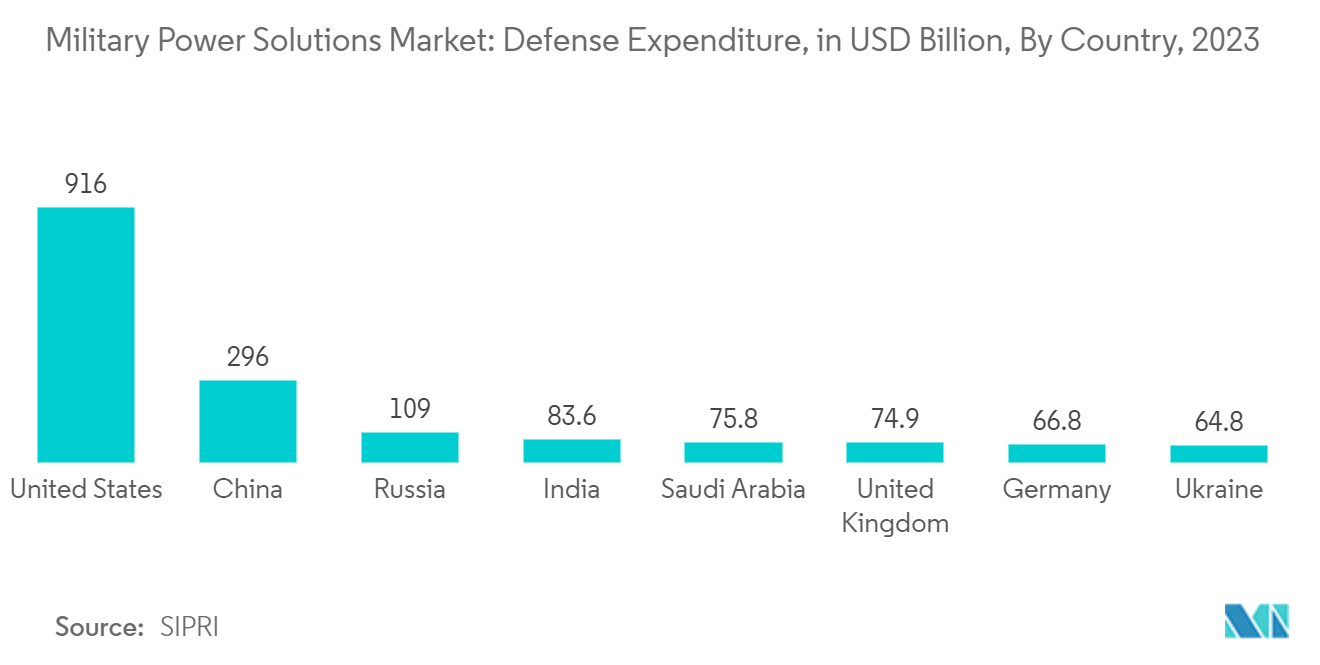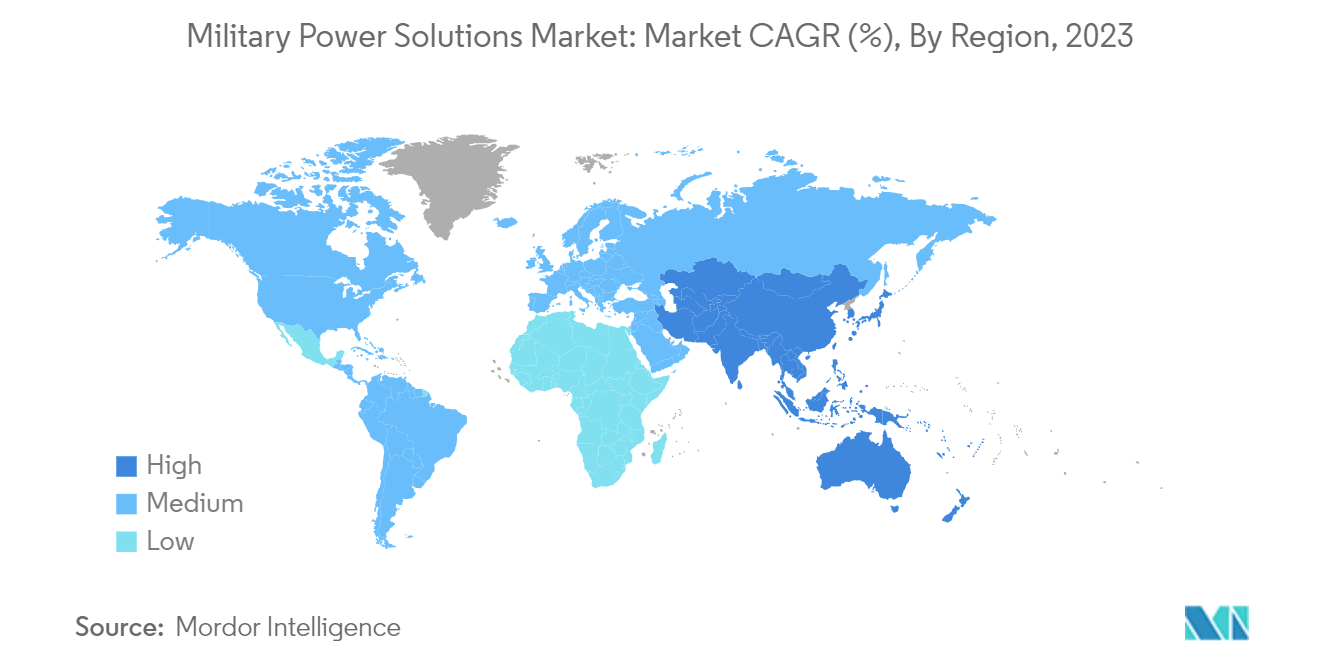Market Trends of Military Power Solutions Industry
Generators Segment to Continue Market Share Domination
- Military bases require a continuous and reliable electrical power source for various operational needs. Generators serve as a backup or supplementary power source, ensuring critical systems, communications, and equipment remain functional even during power outages or in remote locations. Rising spending on the defense sector and a growing focus on enhancing defense capabilities drive the market growth.
- In August 2023, the US Army and the US Air Force awarded Liquid Piston a contract to develop rotary engines that could displace the 30,000 small tactical generator sets currently in use and power drones. The company’s high-efficiency hybrid cycle (HEHC) rotary engines are based on a new architecture and a unique thermodynamic cycle. This renders them very effective in compact power generation and powertrain applications where SWaP is critical.
- In August 2022, the US DoD started building a new prototype nuclear microreactor at the 890-square-mile Idaho National Laboratory as part of Project Pele. The micro-reactor is intended to provide reliable, abundant, and continuous energy by deploying nuclear power systems within the military. The project is scheduled for completion by 2027. It would use tri-structural isotopic (TRISO) atomic fuel rods that are highly heat-resistant and will not melt at the temperatures experienced inside a nuclear reactor core, even during a runaway reaction.
- The demand for generators also comes from military land vehicles for various operations. The versatility of the terrain and the criterion for usage have encouraged vehicle OEMs to integrate superior power solutions that are either sourced from third-party vendors or are developed in-house. Thus, the growing demand for generators in various military applications drives the market growth.

Asia-Pacific is Projected to Show Highest Growth During the Forecast Period
- Increased defense expenditures and rising procurement of advanced military systems from China, India, South Korea, and Japan drive market growth across the Asia-Pacific. These countries have invested vast technological prowess in the indigenous development of several weapon systems to foster their military powers over all dominions-land, air, and water.
- China’s navy is undergoing a vast naval fleet expansion, which is projected to help China surpass Russia as the largest navy in the world in terms of frigates and submarines. China continually emphasizes increasing its anti-submarine warfare (ASW) capabilities from coastal defense to blue-water operations. For instance, in September 2022, the Naval University of Engineering published a study stating that China has developed the world’s most powerful battery for high-energy weapons, which can be mass-produced in the nation’s many lithium battery plants. The 40165 battery was the first to release energy as quickly as a supercapacitor.
- Similarly, in March 2023, the Indian Ministry of Defense (MoD) signed a contract worth INR 19,600 crore (USD 2.39 billion) with Indian shipyards to procure 11 next-generation offshore patrol vessels and six following-generation missile vessels for the Indian Navy. The Defense Ministry awarded over INR 9,100 crore (USD 1.11 billion) contracts for an improved Akash Weapon System and 12 weapon locating radars Swathi (Plains) for the Indian Army. Furthermore, India plans to replace its aging T-72 tanks with new-generation future tanks under the Future Ready Combat Vehicle program. Over the next decade, it is expected to induct about 1,700 new tanks. Hence, the country's growing geopolitical tensions and rapid procurement plans are expected to generate the demand for new military power solutions.


